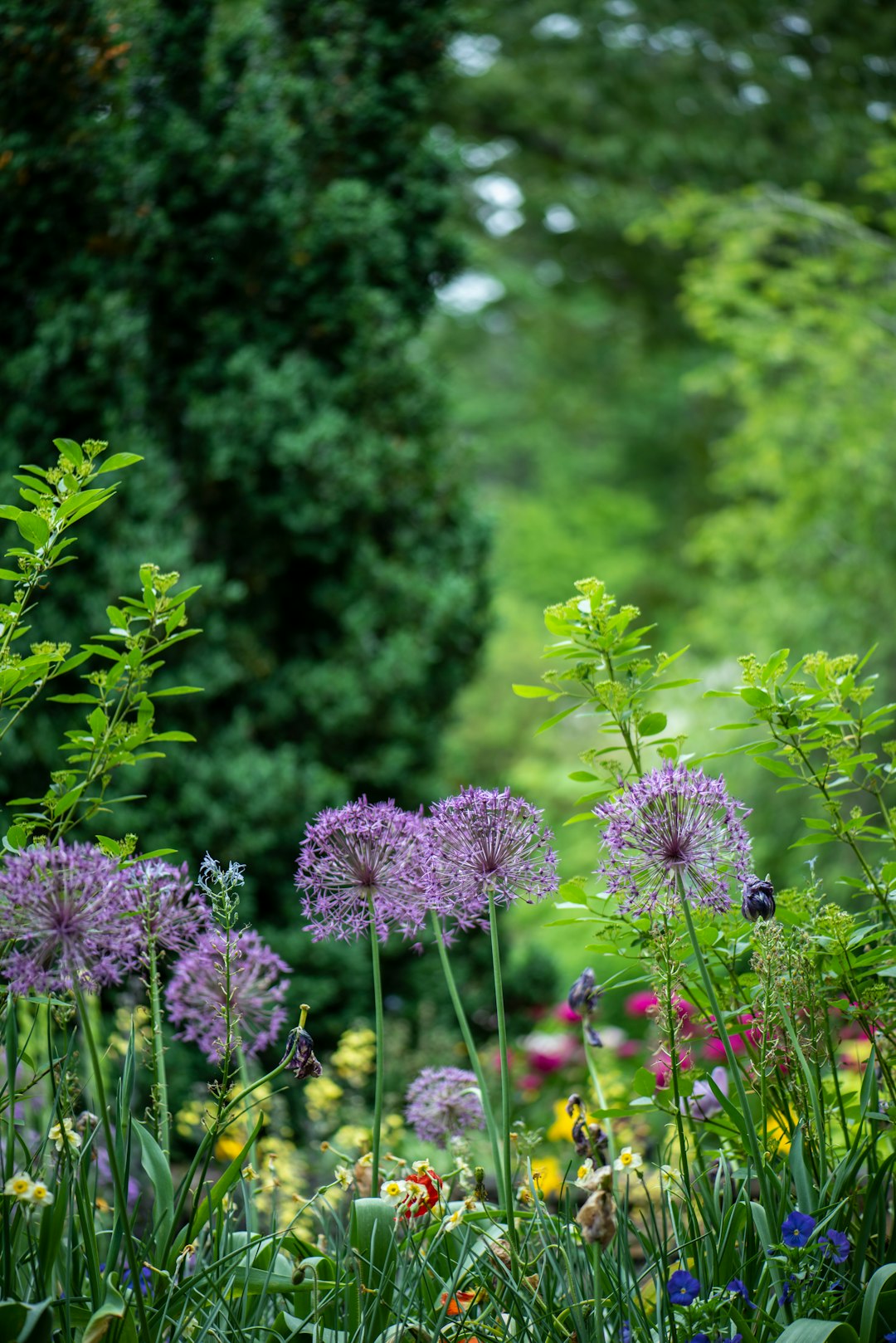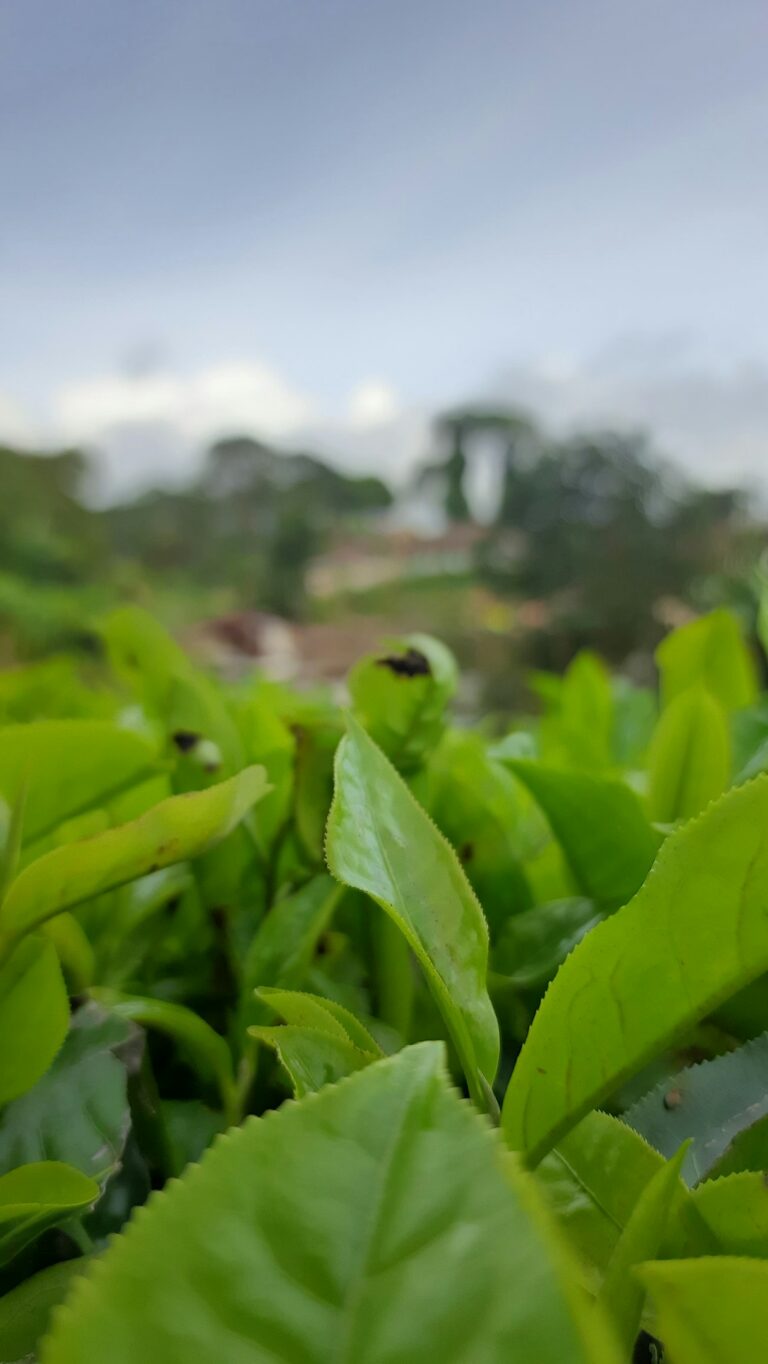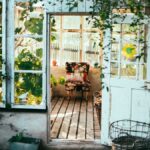Support our educational content for free when you purchase through links on our site. Learn more
How to Grow Green Tea at Home: 11 Essential Tips for a Flavorful Harvest! 🌱
Have you ever dreamed of sipping a steaming cup of fresh green tea, brewed from leaves you nurtured yourself? Imagine the satisfaction of plucking those vibrant leaves from your very own garden and transforming them into a delightful beverage! At Growing Teas™, we believe that growing green tea at home is not just a possibility but a rewarding adventure waiting for you to embark on.
In this comprehensive guide, we’ll walk you through 11 essential tips to cultivate your own green tea plants, from selecting the right variety to mastering the art of brewing. Did you know that all true teas originate from the Camellia sinensis plant? This fascinating fact is just the tip of the iceberg! As you dive into the world of green tea cultivation, you’ll discover the rich history, health benefits, and sustainable practices that make this endeavor worthwhile. So, grab your gardening gloves and let’s get started on this flavorful journey!
Key Takeaways
- Choose the Right Variety: Select a green tea variety that suits your climate and taste preferences, such as ‘Yabukita’ or ‘Longjing’.
- Ideal Growing Conditions: Green tea thrives in well-draining, acidic soil with partial shade and consistent moisture.
- Care and Maintenance: Regular watering, light fertilization, and pruning are essential for healthy growth.
- Harvesting Techniques: Harvest the top two leaves and a bud during the first flush in early spring for the best flavor.
- Health Benefits: Enjoy the numerous health benefits of green tea, including antioxidants and potential heart health support.
Ready to dive deeper? 👉 Shop Green Tea Plants on: Amazon | Etsy | Burpee Official Website and start your green tea journey today! 🌿
Table of Contents
- Quick Tips and Facts for Growing Green Tea at Home 🌱
- The Fascinating History of Green Tea Cultivation 🍃
- Choosing the Right Green Tea Varieties for Your Garden 🌿
- Essential Growing Conditions for Green Tea 🌞
- Step-by-Step Guide to Planting Green Tea 🌱
- Caring for Your Green Tea Plants: Tips and Tricks 🛠️
- Harvesting and Processing Your Green Tea Leaves ☕
- Common Pests and Diseases: Protecting Your Green Tea Garden 🐛
- Brewing Your Homegrown Green Tea: The Perfect Cup ☕
- Exploring the Health Benefits of Green Tea 🌟
- Sustainable Practices for Growing Green Tea 🌍
- Conclusion
- Recommended Links
- FAQ
- Reference Links
1. Quick Tips and Facts for Growing Green Tea at Home 🌱
Want to sip on the freshest cup of green tea imaginable? Look no further than your own backyard! We at Growing Teas™ are here to guide you on this exciting journey. But first, let’s brew up some quick tips and fascinating facts:
- Did you know? All true teas (black, green, white, oolong) originate from the Camellia sinensis plant. Discover the Secrets of the Camellia Sinensis Plant: 10 Fascinating Facts You Didn’t Know! 🌱 It’s like the chameleon of the tea world – different processing creates the variety! 🤯
- Patience is key! It takes about 3 years for Camellia sinensis to mature enough for harvesting. Think of it as an investment in future relaxation. 😌
- Green tea loves a good acidic soil. Aim for a pH between 4.5 and 5.5. Don’t worry, we’ll delve deeper into soil preferences later! 😉
- Partial shade is your green tea plant’s best friend. Too much direct sunlight can scorch those delicate leaves.
- Freshly picked = ultimate flavor! But don’t worry, we’ll teach you the art of drying and storing your homegrown green tea.
Ready to embark on this rewarding adventure? Let’s dive in!
2. The Fascinating History of Green Tea Cultivation 🍃

Before we get our hands dirty (figuratively, for now!), let’s take a trip back in time. Green tea, with its delicate flavor and purported health benefits, boasts a rich history spanning millennia.
- Legend has it… that Emperor Shennong of China, a renowned herbalist, discovered tea in 2737 BC when a leaf accidentally fell into his boiling water. Serendipitous, right? 🍵
- Green tea cultivation truly blossomed during the Tang Dynasty (618-907 AD). It became a staple beverage, enjoyed by emperors and commoners alike.
- From China, green tea embarked on a journey across the globe. Buddhist monks introduced it to Japan, where it became deeply ingrained in their culture, particularly the traditional tea ceremony.
- Today, green tea is enjoyed worldwide, appreciated for its refreshing taste and potential health benefits. And now, you too can be a part of this incredible legacy by growing your own!
Intrigued by the historical journey of tea? Explore more at our History of Tea category!
3. Choosing the Right Green Tea Varieties for Your Garden 🌿
Just like there are countless varieties of wine grapes, the Camellia sinensis plant boasts a diverse family tree! Choosing the right one for your garden depends on your climate and taste preferences.
Popular Green Tea Varieties:
- ‘Yabukita’: Originating in Japan, this variety is known for its rich umami flavor and is a great choice for beginners.
- ‘Fukamushi’: Another Japanese variety, ‘Fukamushi’ undergoes a longer steaming process, resulting in a sweeter, deeper green tea.
- ‘Longjing’ (Dragon Well): Hailing from China, this variety produces a smooth, nutty green tea with a hint of chestnut.
- ‘Biluochun’: Known for its delicate, floral aroma and slightly sweet taste, this Chinese variety is truly special.
Consider these factors when choosing:
- Your local climate: Some varieties are more cold-hardy than others.
- Taste preferences: Do you prefer grassy, vegetal notes or something sweeter and nuttier?
- Growing conditions: How much space do you have? Some varieties grow taller than others.
Still unsure? Our experts at Growing Teas™ can help you select the perfect green tea variety for your garden. Contact us today!
4. Essential Growing Conditions for Green Tea 🌞
Now that you’ve chosen your perfect green tea variety, let’s create the ideal environment for it to thrive!
Sunlight:
- Green tea prefers partial shade, especially in hotter climates.
- Aim for 4-6 hours of sunlight per day, ideally in the morning.
- Afternoon shade can protect the delicate leaves from scorching.
Soil:
- Well-draining soil is crucial! Green tea roots hate to be waterlogged.
- Acidic soil is a must. Aim for a pH between 4.5 and 5.5.
- Amend your soil with compost or peat moss to improve drainage and acidity.
Water:
- Consistent moisture is key. Water deeply but infrequently, allowing the soil to dry slightly between waterings.
- Avoid overwatering! Yellowing leaves can be a sign of too much water.
- Mulch around the base of the plant to retain moisture and suppress weeds.
Temperature and Humidity:
- Green tea thrives in warm, humid climates.
- Protect your plants from frost in colder regions.
- Consider a greenhouse if you live in a particularly dry or cold climate.
By providing the right growing conditions, you’ll be well on your way to harvesting your own delicious green tea!
5. Step-by-Step Guide to Planting Green Tea 🌱
Ready to get your hands dirty? Let’s plant some green tea!
1. Choose the Right Location:
- Remember those ideal growing conditions? Find a spot in your garden that offers partial shade, well-draining soil, and protection from strong winds.
2. Prepare the Soil:
- Loosen the soil about 12-18 inches deep.
- Amend the soil with compost or peat moss to improve drainage and acidity.
- If your soil is heavy clay, consider building a raised bed.
3. Planting Time:
- The best time to plant green tea is in the early spring or fall, when the weather is cool and moist.
4. Dig the Hole:
- Dig a hole twice as wide and just as deep as the root ball of your green tea plant.
5. Gently Place the Plant:
- Carefully remove the plant from its container, gently loosening any circling roots.
- Place the plant in the hole, making sure the top of the root ball is level with the surrounding soil.
6. Backfill and Water:
- Fill the hole with soil, gently firming it around the base of the plant.
- Water deeply to settle the roots.
7. Mulch:
- Apply a 2-3 inch layer of mulch around the base of the plant, keeping it a few inches away from the stem.
Congratulations, you’ve planted your very own green tea plant! Now, let’s move on to caring for it.
6. Caring for Your Green Tea Plants: Tips and Tricks 🛠️
Like any cherished plant, your green tea needs a little TLC to flourish. Here are some essential care tips:
Watering:
- Water deeply and consistently, especially during the first year after planting.
- Check the soil moisture regularly. Stick your finger about an inch into the soil – if it feels dry, it’s time to water.
- Avoid overwatering, which can lead to root rot.
Fertilizing:
- Green tea is a light feeder. Fertilize in the early spring with a balanced, slow-release fertilizer.
- Avoid fertilizing during the heat of summer, as this can stress the plants.
Pruning:
- Prune in late winter or early spring to maintain shape and encourage new growth.
- Remove any dead, damaged, or diseased branches.
- Pinch back new growth to promote bushiness.
Winter Care:
- In colder climates, protect your green tea plants from frost.
- Mulch heavily around the base of the plant.
- Consider wrapping the plant in burlap or using a frost blanket during particularly cold snaps.
By following these care tips, you’ll ensure your green tea plants stay healthy and productive for years to come!
7. Harvesting and Processing Your Green Tea Leaves ☕
The moment you’ve been waiting for! After about 3 years of patient care, your green tea plant will be ready for its first harvest.
When to Harvest:
- The first flush of leaves, typically in early spring, produces the highest quality tea.
- You can also harvest a second flush in late spring or early summer.
- Harvest in the morning, after the dew has dried but before the sun gets too intense.
How to Harvest:
- Pluck the top two leaves and a bud from each stem.
- Use sharp, clean shears or simply pinch off the leaves with your fingers.
- Don’t harvest more than one-third of the plant’s leaves at a time.
Processing Green Tea:
- Withering: Spread the freshly picked leaves on a clean, dry surface for a few hours to wilt slightly.
- Steaming: Briefly steam the leaves to halt oxidation and preserve their green color and fresh flavor. You can use a bamboo steamer or a metal steamer basket over boiling water.
- Rolling: Gently roll the steamed leaves between your palms to shape them and release their aroma.
- Drying: Spread the rolled leaves on a baking sheet and dry them in a preheated oven at the lowest setting (around 170-200°F) for about 20-30 minutes, or until they are completely dry and crispy.
Storing Your Homegrown Green Tea:
- Store your dried green tea leaves in an airtight container in a cool, dark place.
- Properly stored green tea can last for several months, but it’s best enjoyed fresh!
8. Common Pests and Diseases: Protecting Your Green Tea Garden 🐛
While green tea plants are relatively hardy, they can sometimes fall victim to pests and diseases.
Common Pests:
- Aphids: These tiny sap-sucking insects can weaken plants. Blast them away with a strong stream of water or use insecticidal soap.
- Spider Mites: These pests cause stippling on leaves and can be controlled with insecticidal soap or neem oil.
- Scale Insects: These armored insects can be scraped off by hand or treated with horticultural oil.
Common Diseases:
- Root Rot: Caused by overwatering, root rot can be prevented by ensuring well-draining soil.
- Leaf Spot: Fungal diseases can cause spots on leaves. Remove affected leaves and avoid overhead watering.
Prevention is Key:
- Inspect your plants regularly for signs of pests or diseases.
- Keep your garden clean and free of debris.
- Water at the base of the plant to avoid wetting the leaves.
- Ensure good air circulation around the plants.
By being vigilant and taking preventative measures, you can keep your green tea garden healthy and pest-free!
9. Brewing Your Homegrown Green Tea: The Perfect Cup ☕
After all your hard work, it’s time to savor the fruits of your labor! Brewing the perfect cup of homegrown green tea is an art form in itself.
Water Temperature:
- Green tea is delicate and should be brewed with water that’s not quite boiling (around 170-180°F).
- Using water that’s too hot can make the tea bitter.
Steeping Time:
- Steep green tea for 1-3 minutes, depending on your desired strength.
- Over-steeping can also result in bitterness.
Brewing Methods:
- Teapot: Add 1 teaspoon of loose leaf tea per cup of water.
- Tea Infuser: Perfect for single servings.
- French Press: For a larger quantity of tea.
Enjoy!
- Sip your homegrown green tea slowly and savor the fresh, delicate flavor.
- Add a touch of honey or lemon if you prefer.
Experiment!
- Try different steeping times and water temperatures to find your perfect cup.
- Blend your homegrown green tea with other herbs or flowers for unique flavor combinations.
Brewing your own homegrown green tea is a truly rewarding experience. Enjoy the fruits of your labor and impress your friends with your newfound tea connoisseur skills!
10. Exploring the Health Benefits of Green Tea 🌟
Beyond its refreshing taste, green tea has been celebrated for centuries for its potential health benefits.
Rich in Antioxidants:
- Green tea is loaded with polyphenols, powerful antioxidants that can help protect your cells from damage.
- EGCG (epigallocatechin gallate) is a particularly potent antioxidant found in green tea.
Potential Health Benefits:
- Heart Health: Green tea may help lower bad cholesterol levels and reduce the risk of heart disease.
- Brain Function: Some studies suggest that green tea may improve cognitive function and memory.
- Cancer Prevention: While more research is needed, some studies have linked green tea consumption to a reduced risk of certain cancers.
- Weight Management: Green tea may boost metabolism and aid in weight loss.
Enjoy in Moderation:
- While green tea offers numerous potential health benefits, it’s important to enjoy it in moderation.
- Excessive consumption of green tea can interfere with iron absorption and may cause digestive issues.
Consult Your Doctor:
- If you have any underlying health conditions or are taking medications, consult your doctor before adding green tea to your diet.
Incorporating green tea into a healthy lifestyle may offer a range of health benefits. However, it’s essential to enjoy it as part of a balanced diet and to consult your doctor with any concerns.
11. Sustainable Practices for Growing Green Tea 🌍
As conscious gardeners, we at Growing Teas™ believe in nurturing both our plants and the planet. Here are some sustainable practices for growing green tea:
Choose Organic:
- Opt for organic green tea plants and fertilizers to avoid harmful pesticides and herbicides.
- Support organic tea farms that prioritize environmental stewardship.
Conserve Water:
- Water your green tea plants deeply but infrequently to encourage deep root growth and conserve water.
- Use a rain barrel to collect rainwater for irrigation.
- Mulch around the base of your plants to retain moisture and reduce evaporation.
Compost Your Tea Leaves:
- Don’t throw away those used tea leaves! Add them to your compost bin to create nutrient-rich fertilizer for your garden.
Choose Sustainable Packaging:
- When purchasing green tea, look for brands that use sustainable packaging materials, such as recycled paper or compostable bags.
Support Fair Trade:
- Choose Fair Trade certified tea to ensure that tea workers are paid fair wages and work in safe conditions.
By embracing sustainable practices, we can enjoy our daily cup of green tea knowing that we’re doing our part to protect the planet.
Conclusion

Congratulations! 🎉 You’re now well-equipped to embark on your green tea-growing adventure! From selecting the right variety to understanding the essential growing conditions, caring for your plants, and finally savoring that delightful cup of homegrown green tea, you’ve got the knowledge to make it happen.
To recap, here are some positives of growing your own green tea:
- Freshness: Enjoy the freshest tea possible, harvested right from your garden.
- Health Benefits: Reap the numerous health benefits associated with green tea.
- Satisfaction: Experience the joy and satisfaction of nurturing your plants and crafting your own tea.
However, there are some negatives to consider:
- Time Investment: It takes about 3 years for your plants to mature enough for harvesting.
- Climate Sensitivity: Green tea plants require specific growing conditions, which may not be suitable for every gardener.
Despite these challenges, we confidently recommend that you give it a try! The rewards of growing your own green tea far outweigh the hurdles. Plus, you’ll be part of a rich tradition that spans centuries. So, roll up your sleeves, and let’s get growing! 🌱
Recommended Links
- 👉 Shop Green Tea Plants on: Amazon | Etsy | Burpee Official Website
- Books on Tea Cultivation:
FAQ

Can I grow my own green tea?
Absolutely! Growing your own green tea is not only possible but also a rewarding experience. With the right conditions, you can cultivate Camellia sinensis, the plant from which all true teas are derived. Just remember, it takes patience and care to nurture these plants to maturity.
How long does green tea take to grow?
Green tea plants typically take about 3 years to mature enough for harvesting. During this time, you’ll need to provide them with the right care, including proper sunlight, soil conditions, and watering. But don’t worry, the wait is worth it for that fresh cup of tea! ☕
Read more about “🌱 Grow Your Own Tea Garden: A Step-by-Step Guide to Cultivating Tea From Seed”
Can you grow tea trees in the USA?
Yes, you can grow tea trees in the USA! The best regions for growing Camellia sinensis are in the southern states, particularly in areas with a humid climate. States like California, South Carolina, and parts of Texas have seen success in tea cultivation. Just be mindful of your local climate and soil conditions.
Read more about “Is Growing Tea Difficult? 10 Essential Insights for Aspiring Tea Growers … 🍃”
What plants do you need to make green tea?
To make green tea, you only need the leaves from the Camellia sinensis plant. However, you can also experiment by blending these leaves with other herbs or flowers for unique flavors. Some popular additions include mint, lemongrass, or even dried flowers like hibiscus.
What are the best conditions for growing green tea?
Green tea thrives in well-draining, acidic soil with a pH between 4.5 and 5.5. It prefers partial shade and consistent moisture. Aim for a location that receives 4-6 hours of sunlight daily, and ensure good air circulation to prevent diseases.
How do I know when to harvest my green tea?
The best time to harvest green tea is during the first flush in early spring when the new growth is tender. Look for the top two leaves and a bud on each stem. Harvest in the morning after the dew has dried for the best flavor.
Read more about “🌱 Grow Your Own Tea Indoors: 12 Steps to a Cup of Homegrown Bliss”
Reference Links
- MasterClass – Growing Tea Guide
- John Quinn Real Estate – How to Grow Your Own Tea at Home
- Growing Teas – Green Tea Cultivation
- Health Benefits of Tea – Growing Teas
- Soil and Climate for Tea – Growing Teas
With this knowledge, you’re ready to dive into the world of green tea cultivation! Happy gardening! 🌿




